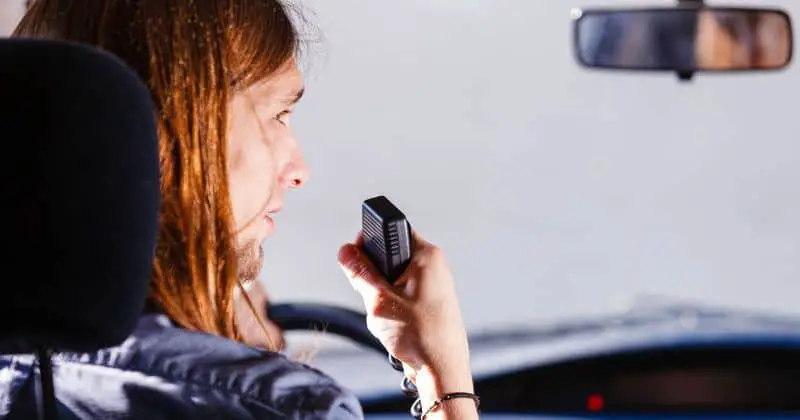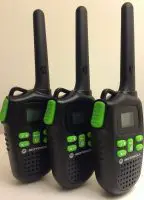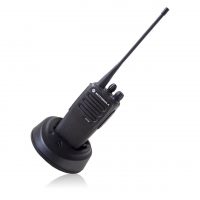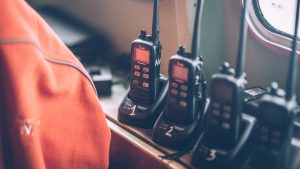We’ve all heard the phrases “Roger”, “10-4”, and “Over and Out”, and over the years these walkie talkie lingo and codes have become a staple of everyday slang. Did you know that these phrases only touch the surface of an entire language of walkie talkie lingo?
Walkie talkies and two-way radios were in existence long before the cellphones and technology of today, and as these devices started being used in applications such as public safety and the military, a set of standardized lingo developed to ensure communication was as clear and efficient as possible.
Take a look at the history of the language of walkie talkie lingo, and you can start using it in your own radio communications today!
Table of Contents
Walkie Talkie Lingo and Codes
Walkie talkie lingo and codes allow you to communicate easily with those around you in a convenient way. Lots of people have to use walkie-talkies for various reasons. However, most don’t fully understand the lingo unless they’ve completed a training course in the subject.
Considering that, we designed this infographic about walkie-talkie lingo to offer a helping hand. It presents the most important information you’ll need when communicating using walkie talkies.

Walkie Talkie Ten Codes
Ten codes contain some of the most popular lingo terms for walkie-talkie use. We’ve all heard of “10-4”, which means “message received”, but by learning more of the vast language of ten codes you can make your walkie-talkie communication even more efficient and fun!
- 10-20: Has anyone ever asked you, “What’s your 20?” They were using walkie-talkie lingo! The code 10-20 translates to “What’s your location?”, and it can be used to quickly identify where your partner is when using your walkie-talkie set.
- 10-1: This 10 code means “receiving poorly”. When transmitting in difficult terrain or unfavorable conditions, using this code gives you a shortcut to get the message across to your partner that their communication is not coming through clear.
- 10-27: Using the code 10-27 in radio transmission lets your partner know you are “moving to channel ___”. Most walkie-talkies have multiple channels for transmission in order to cut down on interference with the signal. By using this ten code you can discreetly let someone know that it’s time to switch to a different channel.
- 10-4: I received and understood your message.
- 10-22: Please forget what I said and proceed.
If you want to learn even more take a look at our radio communication codes for walkie talkies article. You can also find a full list of police 10 codes here.
Walkie Talkie Language and Terms
Just as with any language, there are certain phrases unique to the world of two-way radio communication. By learning some of the most common phrases, you can be sure to sound like a pro when talking over walkie talkies with your friends!
- Affirmative/Negative: Used in place of “yes” and “no”, using the affirmative and negative terms is a key way of showing you are up on the language of walkie-talkie lingo!
- Copy: The term “copy” in two-way radio communication is another phrase that has become commonplace with everyday communication. We’ve all used the phrases “Copy that” and “Do you copy?”, when trying to get a message across to someone in a conversation. Contrary to popular belief however, these phrases simply mean you have heard and understood the message transmitted, not that you are agreeing with the information provided.
- Over/Over and Out: Used to end a transmission, these walkie-talkie phrases are essential to effective radio conversation. Since walkie-talkies generally have a click and hold feature to communicate, saying “over” lets your partner know that you are done speaking and they can respond without getting lost in your transmission. Using the phrase “over and out” lets your partner know that you are ending the conversation and will no longer be transmitting.
- Why Do You Say Over? Saying over easily indicates that this is the end of the transmission, otherwise your counterpart could be left without an understanding of the finish
- Roger: Confirms receipt of message, essentially affirming you understand the content of the message.
- Over and Out: When you finish transmitting your message and then wish to end communication entirely, you use Over and Out.
- How Do You End A Walkie Talkie Conversation: Use over and out, or another agreed upon code or phrase which will let your partner know the conversation is over.
- What’s Your Handle: Use this when you want to ask your counterpart what their nickname/”handle” is.
- Got Your Ear’s On?: This is for when you want to confirm that the other party is listening and ready to receive your transmission. You hope they response Affirmative!
- Eyes On? You can use this to indicate whether or not you have visual confirmation of something you are looking at or observing. Essentially, whether you have “eyes on” on the situation, object, or scene being discussed.
Learning the basics of walkie-talkie lingo opens you up to another level of radio communication. There are times when the signal is poor or discretion is needed in conversation, making ten codes and typical radio phrases essential to getting your message across.
Funny Walkie Talkie Things
A funny thing to think about is how walkie talkies were named. Given you could walk and talk with it, it makes sense. But if you dive deeper, it makes you wonder what other normal items would be called if they had the same format. We found some hilarious ones on Reddit:
- Forks = stabby grabbies
- Microwave = heatie eaties
- Screwdrivers = rightie tighties
- Socks = feetie heaties
By practicing your walkie talkie lingo you are sure to enhance your communication and up the level of fun when using two-way radios with your friends! Check out our Best Walkie Talkie Buyer’s Guide if you’re interested in getting your own pair to try out some of this fun lingo!
If you found this article useful, then you might also find these helpful:





